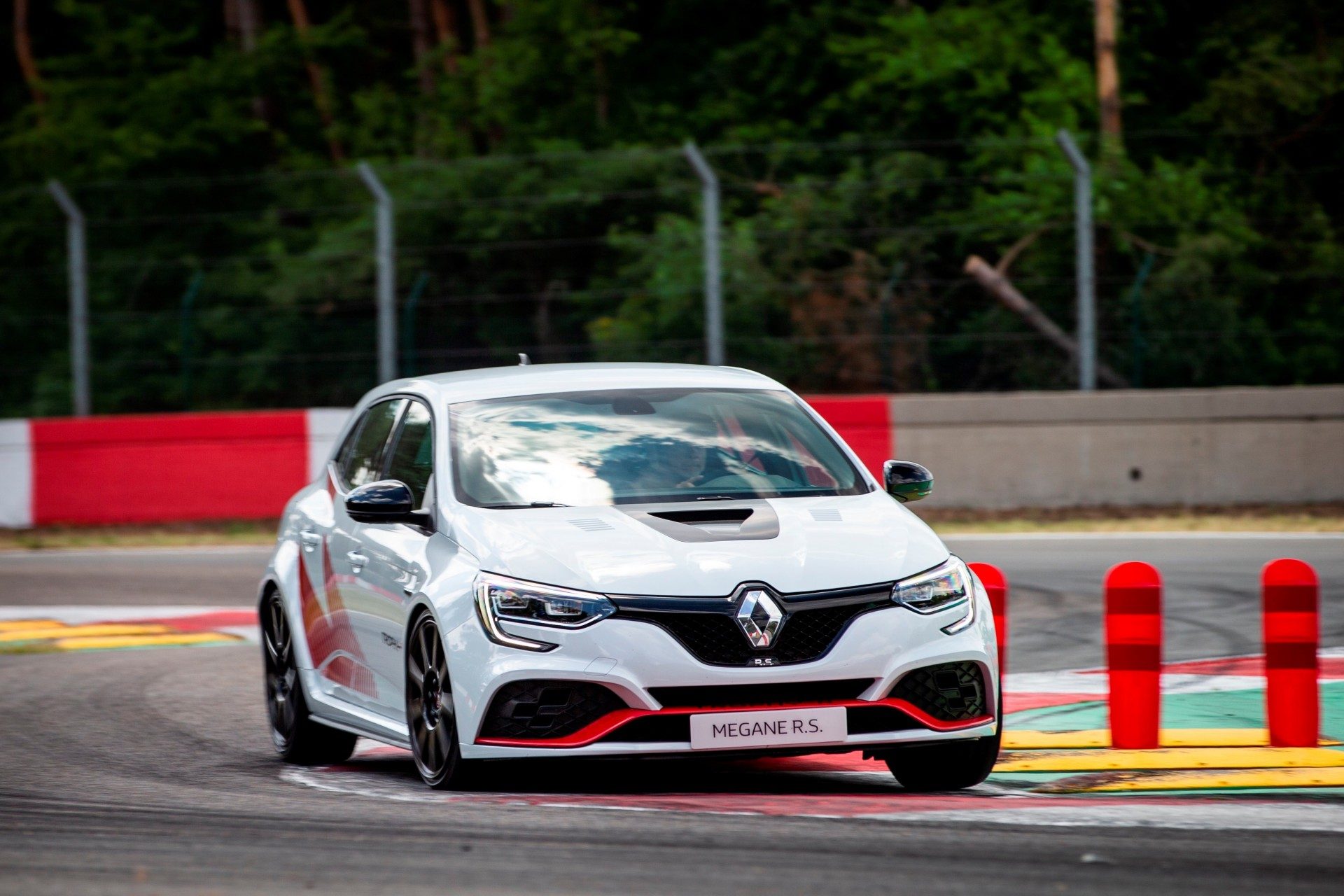
The car features a Torsen limited slip differential, and the negative camber on the front axle increased by 1° compared to that of the Megane R.S. The front discs measure 355 mm with Brembo 4-piston 42 mm calipers, which can be upgraded to 390 mm carbon-ceramic rotors with Brembo Gold 4-piston calipers.

The suspension is taken care of by Öhlins, which can be adjusted for body height and compression/expansion. Interiors get Sabelt composite monocoque racing seats with Alcantara that save 7 kg per seat, holding subframe instead of rear seats that save 25 kg, and a lighter 7-inch display that saves 250 grams compared to an 8.7-inch screen. The reversing camera is retained to avoid any risk of damaging the carbon diffuser. Aerodynamic improvements include a NACA duct on the bonnet. Vision headlights delivering 2 kg weight saving, and a high-performance DESS (Dual Energy Storage System) lead battery that offers 4.5 kg weight saving. The components that help shave weight are carbon composite bonnet, carbon rear diffuser, Fuji Light 19-inch alloy wheels that save 2 kg/wheel, optional carbon wheels can further save 2 kg/wheel, Akrapovič titanium exhaust line that saves 6 kg, lighter rear axle for a 38 kg weight saving, optional air intakes replacing the R.S. Trophy-R loses a lot of weight.Īccording to Renault, the Trophy-R is 130 kg lighter compared to the Trophy version without options.

In order to achieve such a performance, the new Megane R.S. hot hatch set an FWD Nürburgring lap time of 07:40.100 recently, beating Civic Type R’s 07:43.80 time. The track-focused version of Renault Megane R.S.


 0 kommentar(er)
0 kommentar(er)
